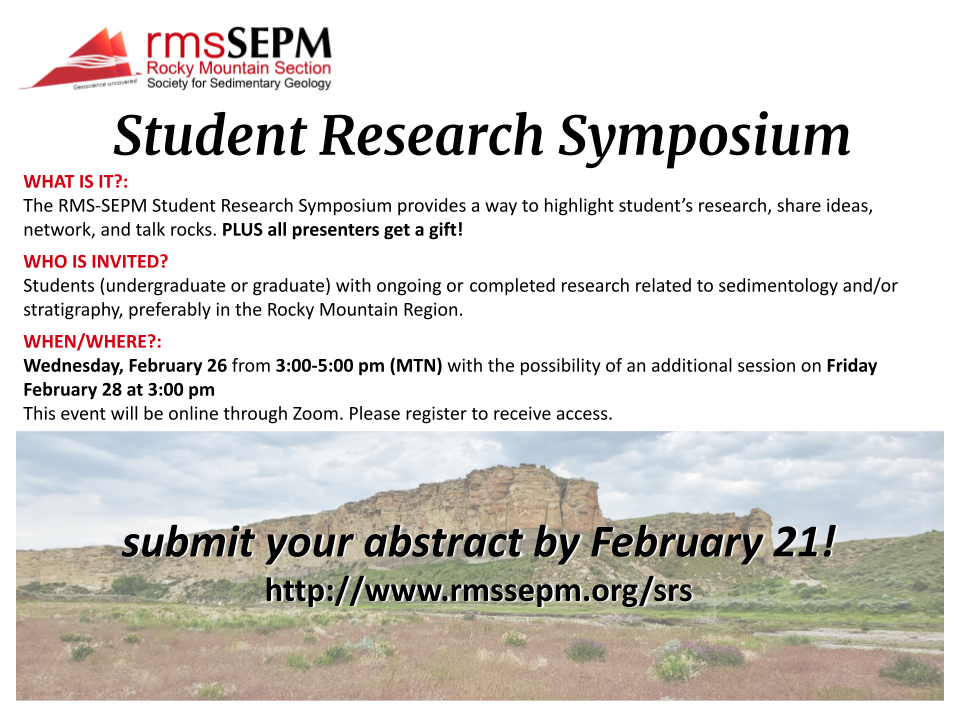Student Research symposium
RMS-SEPM holds a yearly student poster symposium to provide geology students (undergrad and graduate) the opportunity to showcase their work to industry and working professionals. Our goal is for students and professionals to share ideas, network and have fun! This event will be held virtually over 2 days; February 26 and February 28, 2025 from 3-5pm MTN.
Presenters, please fill out the form below by February 21st, 2025


Sponsor the Student Poster Symposium
Contact Symposium Coordinator
Questions about the upcoming symposium? Interested in helping out or have an idea or suggestion for a future event? We would love to hear from you! Please share your ideas and commentary to help us improve our annual student poster symposium.
Past symposiums
Poster symposium to bring together graduate students to showcase their research with industry veterans



